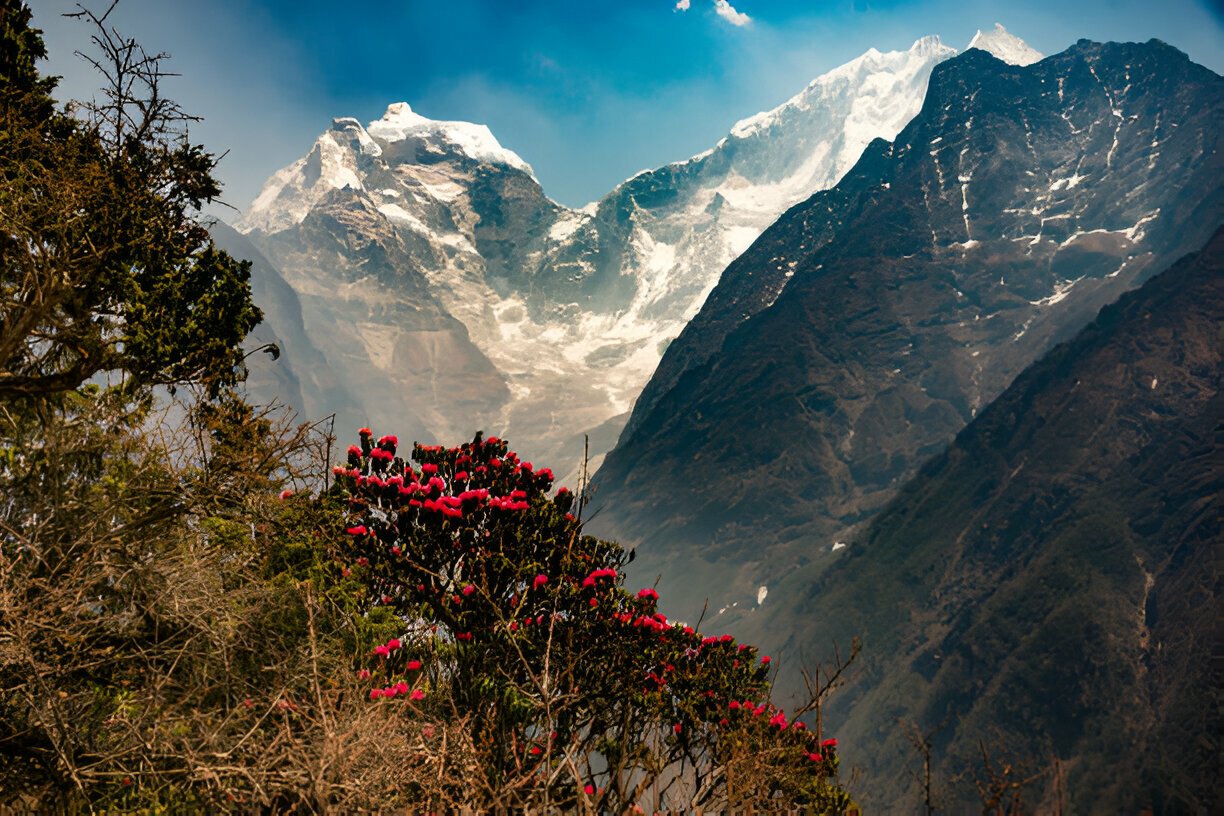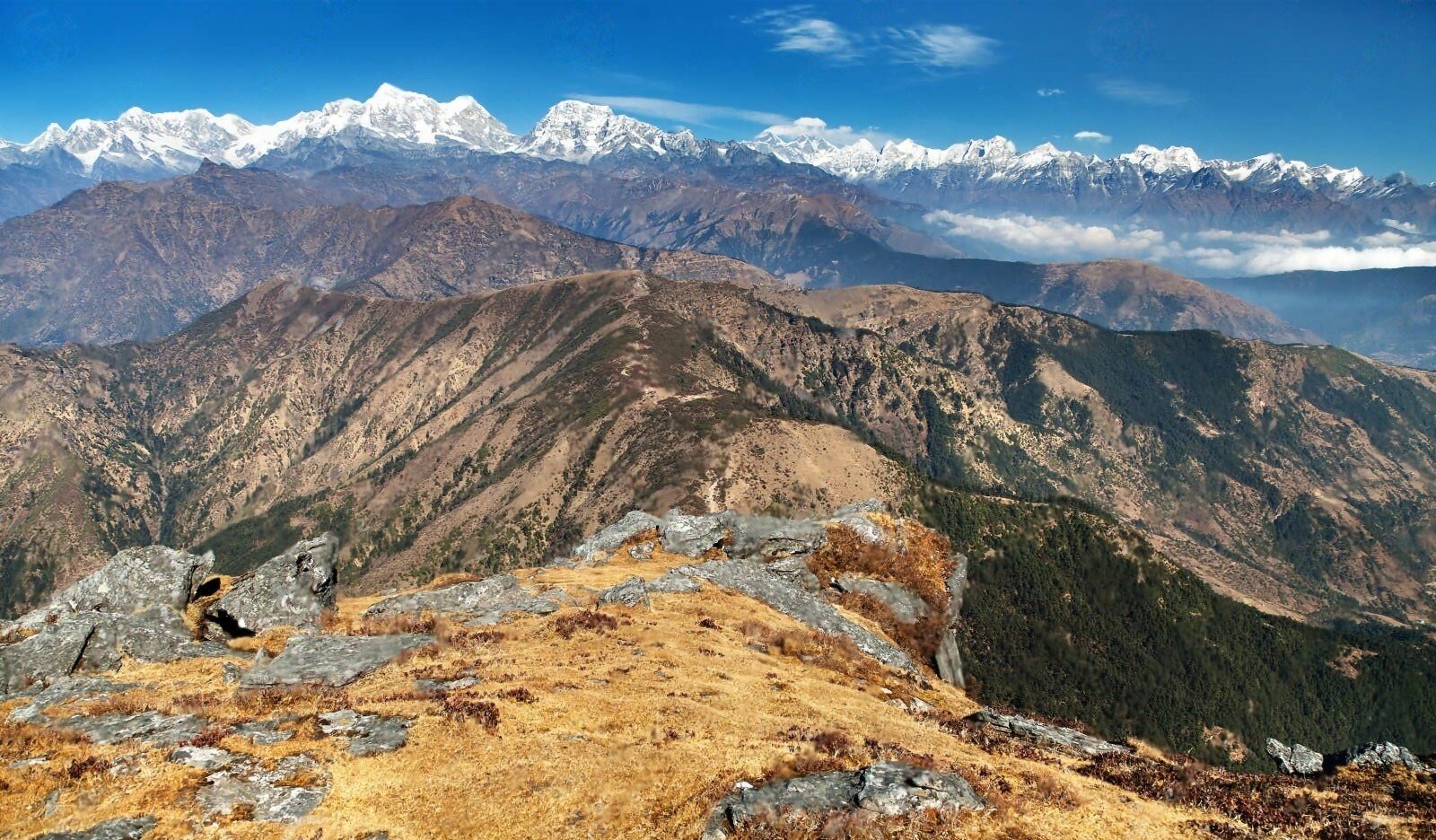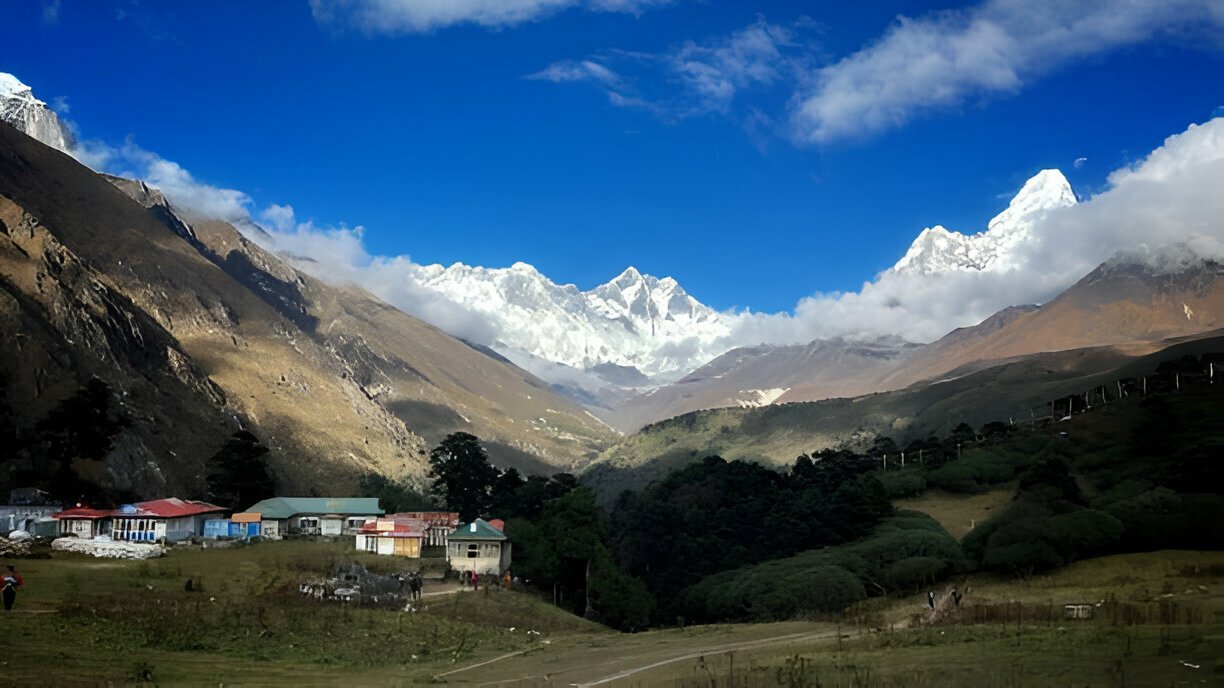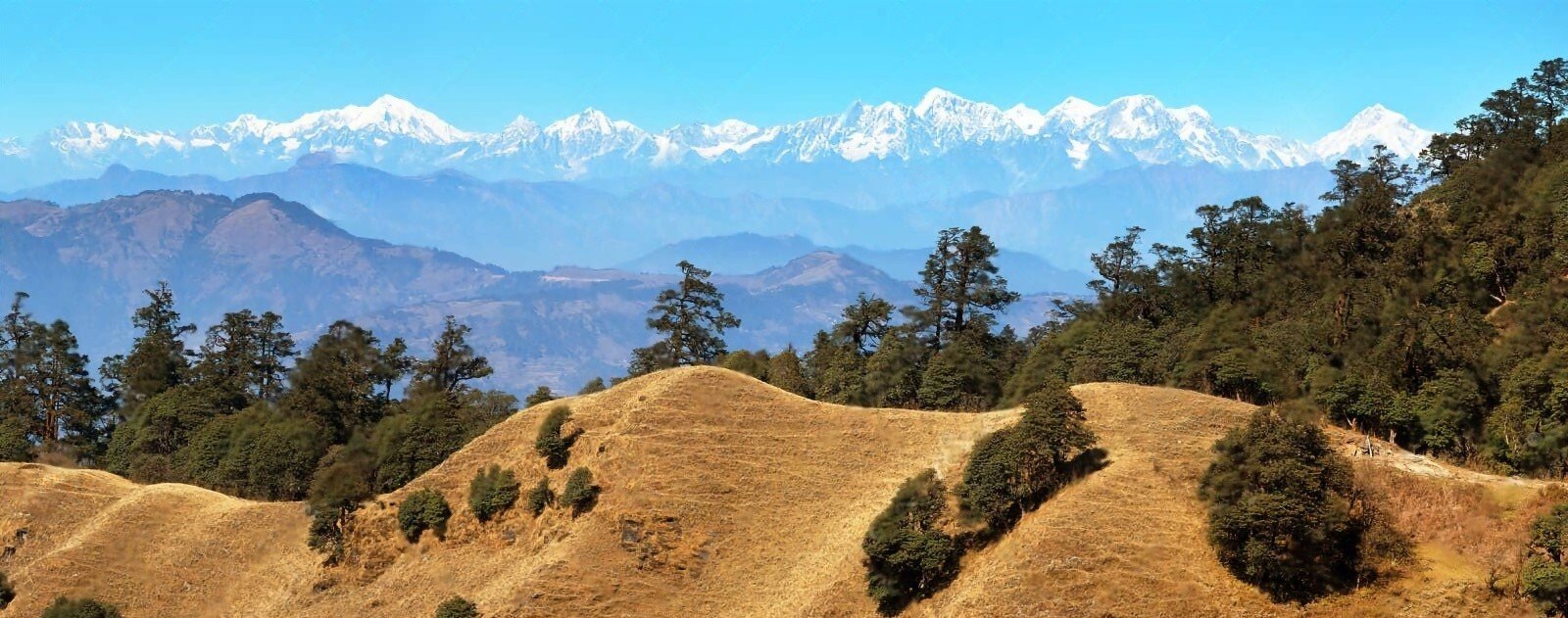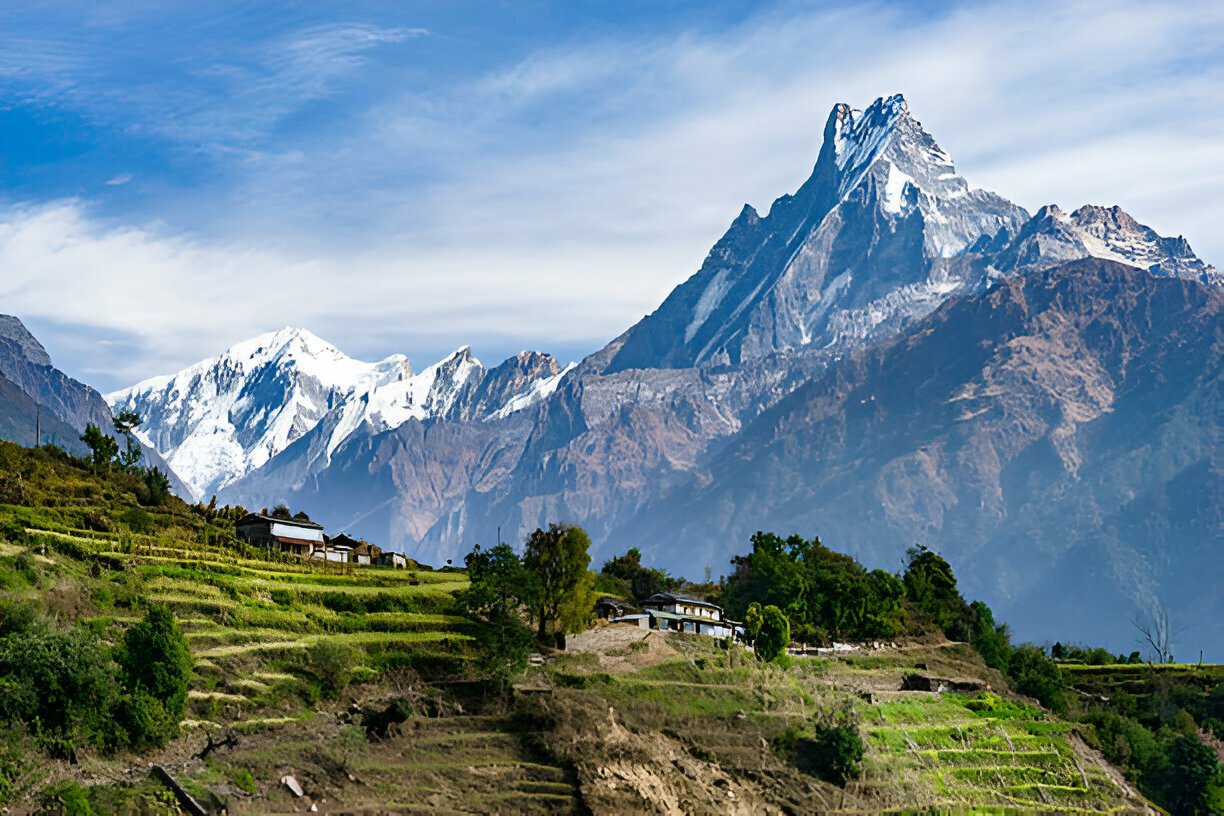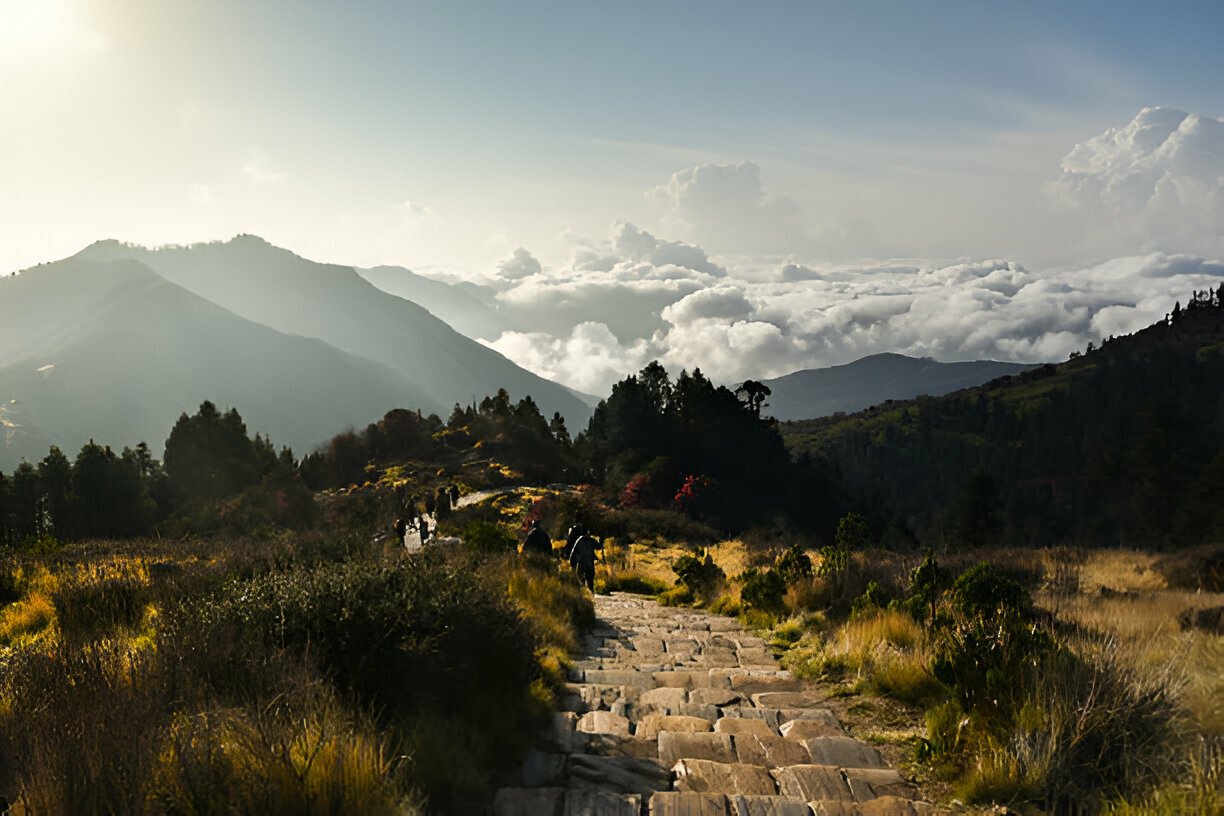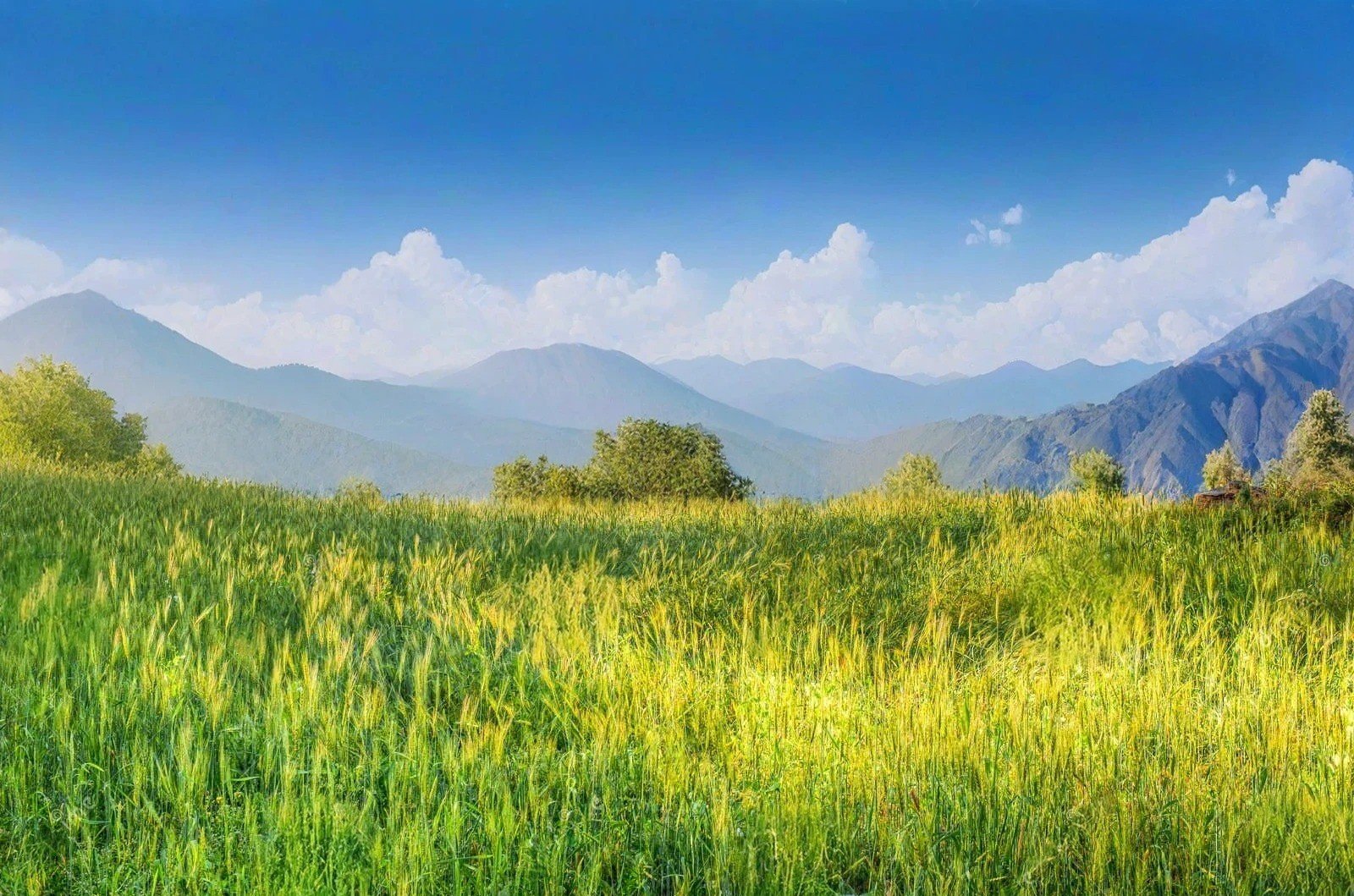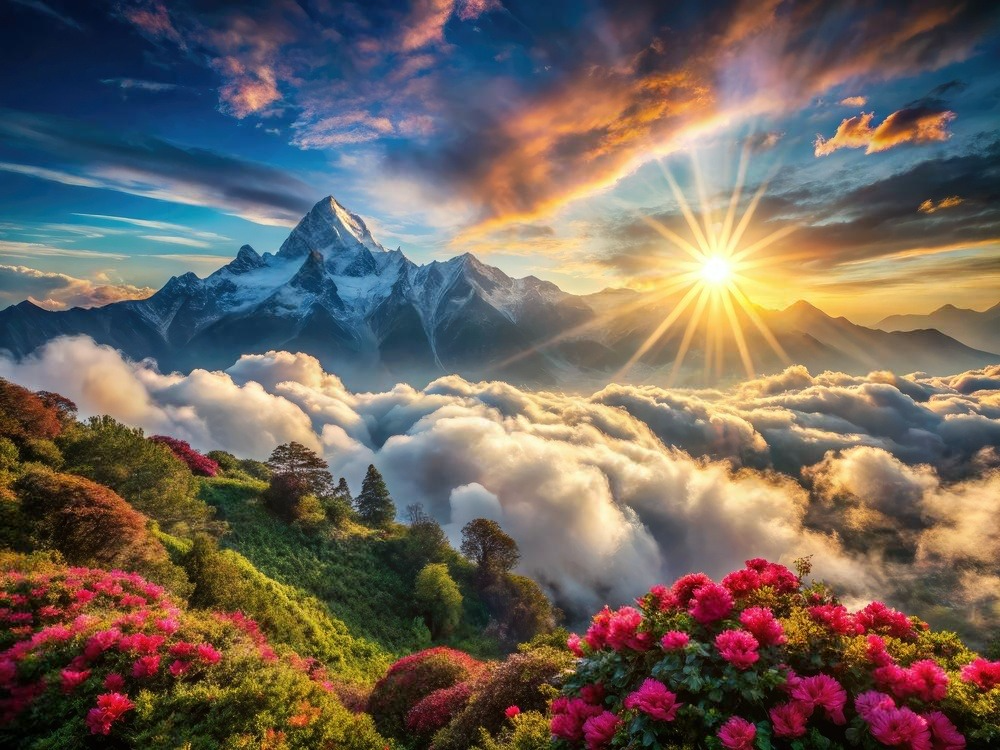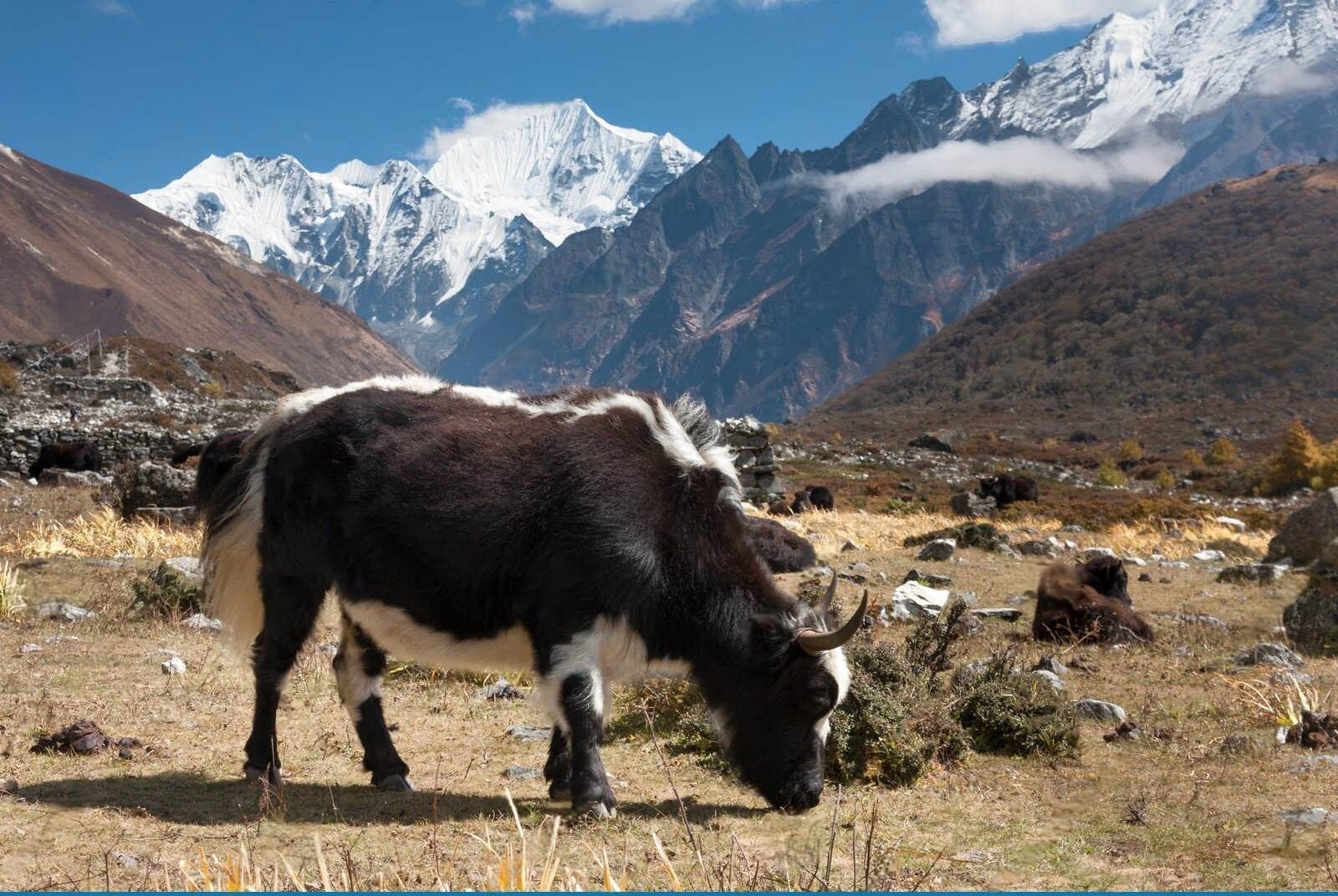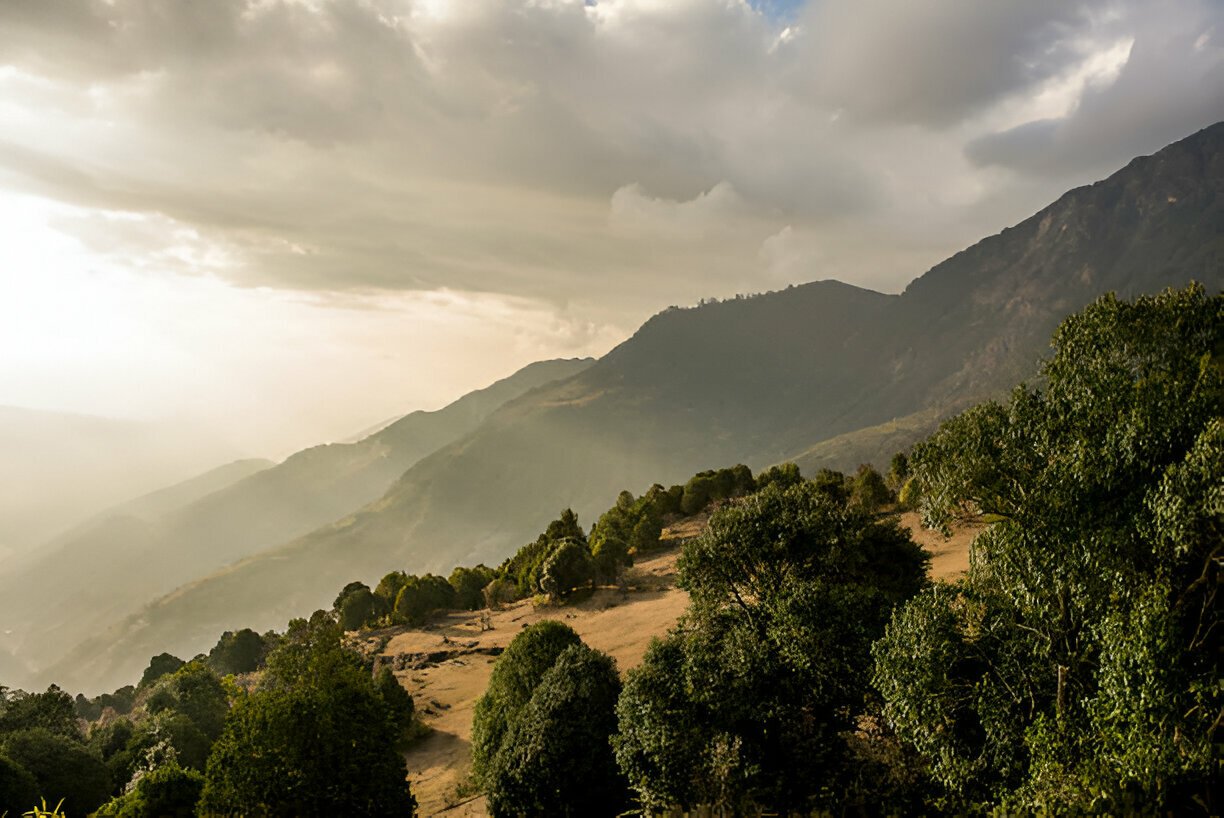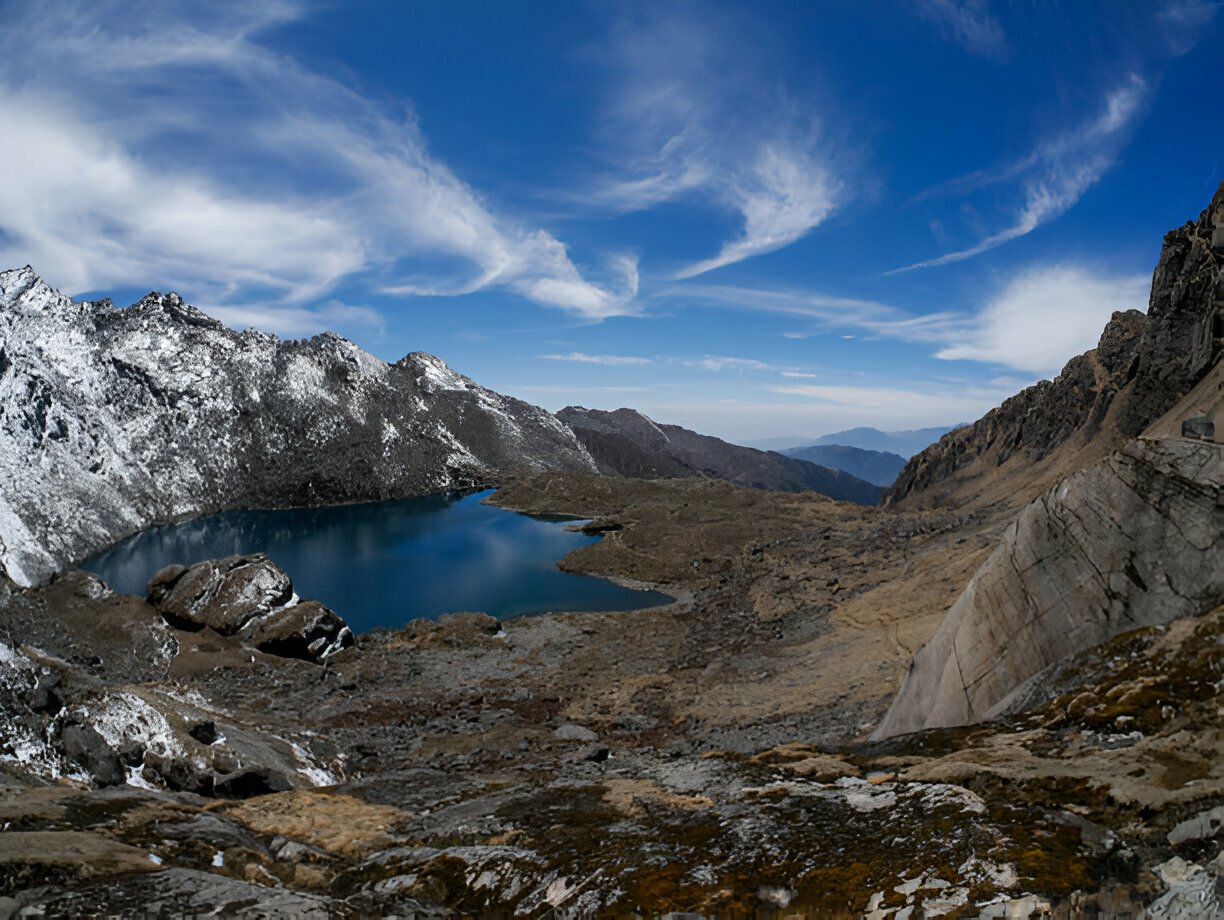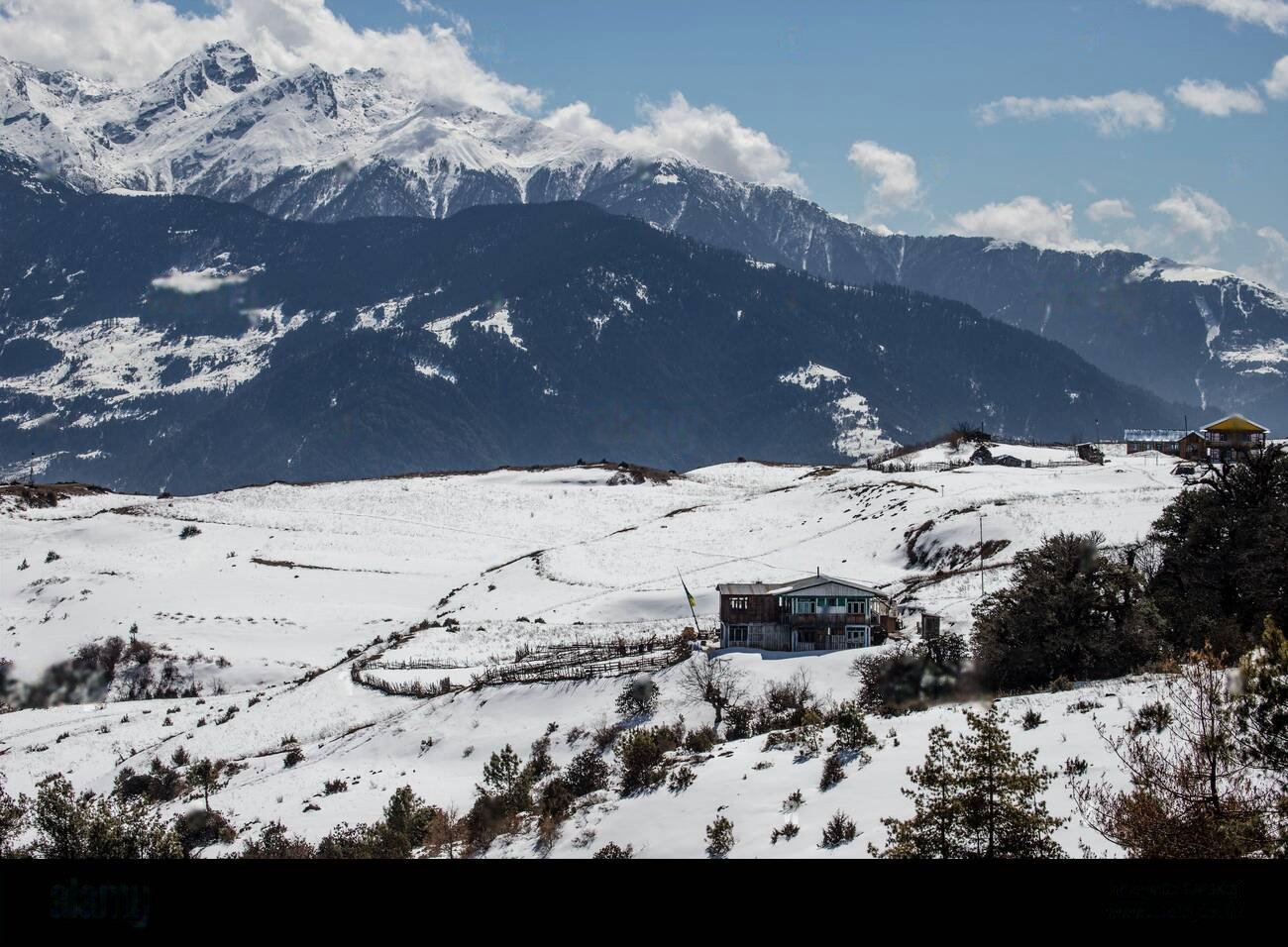 About this Trip
About this Trip
The Upper Mustang Trek represents one of the most extraordinary cultural immersions available in the Himalayan region, offering a journey that transcends typical mountain trekking to create a profound exploration of a nearly forgotten world. What makes this trek truly exceptional is its perfect combination of dramatic landscapes, preserved Tibetan culture, and the palpable sense of entering a realm that remained forbidden to outsiders until very recently.
The trek follows an ancient route that served as a vital corridor for salt trade between Tibet and the lowlands of Nepal and India, winding through an otherworldly landscape of eroded canyons and imposing cliffs that glow with mineral-rich colors rarely seen in nature. This barren yet beautiful environment creates a stark canvas against which the region's cultural elements like prayer flags, chortens, monasteries, and walled settlements stand in vivid relief, creating visual compositions that seem purpose-designed for contemplation and photography.
The cultural dimension of this trek is unparalleled in the Himalayan region. When Tibet came under Chinese control and many aspects of traditional Tibetan life were suppressed, Upper Mustang isolated by its remoteness and political status as part of Nepal maintained Tibetan traditions, language, and religious practices largely unchanged. This preservation was further enhanced by the region's status as a restricted area until 1992, and the continuing limitations on visitor numbers through the permit system. The result is a living museum where ancient Buddhist practices, artwork, architecture, and social structures continue in their authentic form, offering insights into a way of life that has elsewhere been significantly altered.
Physically, the trek presents a stimulating challenge without extreme technical difficulty. The trail traverses varied terrain including narrow paths along cliff edges, high passes with expansive views, and broad valleys dotted with settlements. The relatively moderate maximum elevation means altitude sickness is less problematic than on many Himalayan treks, though the dry, dusty conditions and intense sun at high altitude create their own demands. The region's location in the rain shadow ensures generally stable weather, allowing for a more predictable trekking experience than in many parts of Nepal.
Perhaps most distinctively, the Upper Mustang trek creates a sense of genuine discovery and privileged access that has become increasingly rare in today's highly connected world. Despite slowly increasing visitor numbers, the remote location and permit restrictions mean trekkers often find themselves alone on the trail for hours, with only the sound of wind and the occasional tinkling of distant goat bells. This solitude, combined with the otherworldly landscape and cultural authenticity, creates a deeply immersive experience that many trekkers describe as spiritually moving and profoundly different from other Himalayan adventures.
Difficulty Level of the Upper Mustang Trek:
The Upper Mustang Trek is generally classified as moderate to challenging, demanding a good level of physical fitness and stamina. While the maximum altitude of approximately 3,950m at Lo La Pass is lower than many other Himalayan treks, the combination of daily trekking hours, rugged terrain, and arid conditions creates a unique set of challenges.
- Daily Trekking: Trekkers can expect to walk for 4-7 hours each day, covering distances of 10-18 kilometers (6-11 miles). The trail includes numerous ascents and descents, often along rocky paths and steep slopes.
- Terrain: The terrain varies from wide, dusty trails to narrow paths along cliff edges, requiring careful foot placement. The arid environment can lead to loose gravel and uneven surfaces, increasing the risk of slips and falls.
- Altitude: Although the maximum altitude is relatively moderate, trekkers should still be aware of altitude sickness symptoms. Gradual acclimatization is essential, and proper hydration is crucial to mitigate potential issues.
- Weather: The dry, sunny climate of Upper Mustang means intense sun exposure during the day and significant temperature drops at night. Trekkers must be prepared for both extremes, with layered clothing and adequate sun protection.
- Remote Conditions: The remoteness of Upper Mustang means limited access to medical facilities and emergency services. Trekkers should be self-reliant and prepared for basic conditions.
Overall, the Upper Mustang Trek is suitable for individuals with previous trekking experience and a reasonable level of fitness. Preparation and awareness of the specific challenges are essential for a safe and enjoyable journey.
Trekking Permits Required for the Upper Mustang Trek:
To trek in Upper Mustang, several permits are mandatory, reflecting the region's status as a restricted area.
- Upper Mustang Restricted Area Permit: This special permit costs $500 per person for the first 10 days, with an additional $50 per day for extensions. It requires a minimum of two trekkers and must be obtained through a registered trekking agency in Nepal. This permit allows entry into the restricted zone beyond Kagbeni.
- Annapurna Conservation Area Permit (ACAP): This permit is required for entry into the Annapurna Conservation Area, which includes the Upper Mustang region. It costs approximately $30 and can be obtained in Kathmandu or Pokhara.
- Trekkers' Information Management System (TIMS) Card: This card is mandatory for all trekkers in Nepal. It costs approximately $20 and can also be obtained in Kathmandu or Pokhara.
Permit requirements are strictly enforced, and trekkers must carry all necessary documents throughout the trek. These regulations help manage visitor numbers and support conservation and cultural preservation efforts in Upper Mustang.
A Typical Day on the Upper Mustang Trek:
A typical day on the Upper Mustang Trek involves a structured routine designed to maximize trekking time and allow for cultural immersion.
- Morning (6:00 AM - 8:00 AM): Wake up early to enjoy a hot drink and a hearty breakfast, typically consisting of Tibetan bread, porridge, or eggs. Pack your belongings and prepare for the day's trek.
- Mid-Morning (8:00 AM - 12:00 PM): Begin trekking, following the trail through the dramatic landscape. The pace is generally steady, with occasional stops for rest, photography, and water breaks.
- Lunch (12:00 PM - 1:00 PM): Stop at a teahouse along the trail for a hot lunch, often dal bhat or noodle soup.
- Afternoon (1:00 PM - 4:00 PM): Continue trekking, often during the hottest part of the day. The trail may involve steep ascents and descents, requiring careful foot placement.
- Late Afternoon/Evening (4:00 PM - 6:00 PM): Arrive at the day's destination, a village with a teahouse. Settle into your room, wash up, and relax.
- Evening (6:00 PM - 9:00 PM): Enjoy dinner, typically dal bhat or other simple dishes. Interact with fellow trekkers and local residents. Prepare for the next day's trek and go to sleep early to rest.
This routine may vary slightly depending on the day's itinerary and weather conditions. Trekkers should be prepared for long days and adapt to the rhythm of trekking life.
What to Expect in a Teahouse:
Teahouses in Upper Mustang provide basic accommodation and essential services for trekkers.
- Rooms: Rooms are typically simple, with two single beds, basic mattresses, and minimal furniture. Shared bathrooms are the norm.
- Facilities: Teahouses offer basic facilities, including a common dining area, kitchen, and toilets. Hot showers may be available for an additional fee, but availability is limited.
- Meals: Teahouses serve simple meals, primarily dal bhat, noodle soups, and Tibetan bread. Menus are limited due to the region's remoteness.
- Electricity: Electricity is often limited, with some teahouses offering solar-powered charging for devices at an extra cost.
- Hygiene: Hygiene standards vary, and trekkers should carry their own toiletries and hand sanitizer.
- Atmosphere: Teahouses provide a warm and welcoming atmosphere, offering opportunities to interact with fellow trekkers and local residents.
Trekkers should be prepared for basic conditions and bring essential items like a sleeping bag, toiletries, and snacks.
Do I Need a Porter for this Trek?
Hiring a porter for the Upper Mustang Trek can significantly enhance your experience, especially considering the length and challenging terrain of the trek.
- Physical Assistance: Porters carry your main luggage, allowing you to trek with a lighter daypack. This reduces physical strain and allows you to focus on enjoying the scenery and cultural experiences.
- Local Knowledge: Porters often have extensive knowledge of the local area, including trails, villages, and cultural insights. They can provide valuable assistance and enhance your understanding of the region.
- Support for the Local Economy: Hiring porters supports the local economy and provides employment opportunities for residents of Upper Mustang.
- Considerations: Trekkers should ensure porters are treated fairly and paid a reasonable wage. It is advisable to hire porters through a reputable trekking agency.
While hiring a porter is not mandatory, it is highly recommended for a more comfortable and enjoyable trekking experience.
The Upper Mustang Trek represents one of the most extraordinary cultural immersions available in the Himalayan region, offering a journey that transcends typical mountain trekking to create a profound exploration of a nearly forgotten world. What makes this trek truly exceptional is its perfect combination of dramatic landscapes, preserved Tibetan culture, and the palpable sense of entering a realm that remained forbidden to outsiders until very recently.
The trek follows an ancient route that served as a vital corridor for salt trade between Tibet and the lowlands of Nepal and India, winding through an otherworldly landscape of eroded canyons and imposing cliffs that glow with mineral-rich colors rarely seen in nature. This barren yet beautiful environment creates a stark canvas against which the region's cultural elements like prayer flags, chortens, monasteries, and walled settlements stand in vivid relief, creating visual compositions that seem purpose-designed for contemplation and photography.
The cultural dimension of this trek is unparalleled in the Himalayan region. When Tibet came under Chinese control and many aspects of traditional Tibetan life were suppressed, Upper Mustang isolated by its remoteness and political status as part of Nepal maintained Tibetan traditions, language, and religious practices largely unchanged. This preservation was further enhanced by the region's status as a restricted area until 1992, and the continuing limitations on visitor numbers through the permit system. The result is a living museum where ancient Buddhist practices, artwork, architecture, and social structures continue in their authentic form, offering insights into a way of life that has elsewhere been significantly altered.
Physically, the trek presents a stimulating challenge without extreme technical difficulty. The trail traverses varied terrain including narrow paths along cliff edges, high passes with expansive views, and broad valleys dotted with settlements. The relatively moderate maximum elevation means altitude sickness is less problematic than on many Himalayan treks, though the dry, dusty conditions and intense sun at high altitude create their own demands. The region's location in the rain shadow ensures generally stable weather, allowing for a more predictable trekking experience than in many parts of Nepal.
Perhaps most distinctively, the Upper Mustang trek creates a sense of genuine discovery and privileged access that has become increasingly rare in today's highly connected world. Despite slowly increasing visitor numbers, the remote location and permit restrictions mean trekkers often find themselves alone on the trail for hours, with only the sound of wind and the occasional tinkling of distant goat bells. This solitude, combined with the otherworldly landscape and cultural authenticity, creates a deeply immersive experience that many trekkers describe as spiritually moving and profoundly different from other Himalayan adventures.
Difficulty Level of the Upper Mustang Trek:
The Upper Mustang Trek is generally classified as moderate to challenging, demanding a good level of physical fitness and stamina. While the maximum altitude of approximately 3,950m at Lo La Pass is lower than many other Himalayan treks, the combination of daily trekking hours, rugged terrain, and arid conditions creates a unique set of challenges.
- Daily Trekking: Trekkers can expect to walk for 4-7 hours each day, covering distances of 10-18 kilometers (6-11 miles). The trail includes numerous ascents and descents, often along rocky paths and steep slopes.
- Terrain: The terrain varies from wide, dusty trails to narrow paths along cliff edges, requiring careful foot placement. The arid environment can lead to loose gravel and uneven surfaces, increasing the risk of slips and falls.
- Altitude: Although the maximum altitude is relatively moderate, trekkers should still be aware of altitude sickness symptoms. Gradual acclimatization is essential, and proper hydration is crucial to mitigate potential issues.
- Weather: The dry, sunny climate of Upper Mustang means intense sun exposure during the day and significant temperature drops at night. Trekkers must be prepared for both extremes, with layered clothing and adequate sun protection.
- Remote Conditions: The remoteness of Upper Mustang means limited access to medical facilities and emergency services. Trekkers should be self-reliant and prepared for basic conditions.
Overall, the Upper Mustang Trek is suitable for individuals with previous trekking experience and a reasonable level of fitness. Preparation and awareness of the specific challenges are essential for a safe and enjoyable journey.
Trekking Permits Required for the Upper Mustang Trek:
To trek in Upper Mustang, several permits are mandatory, reflecting the region's status as a restricted area.
- Upper Mustang Restricted Area Permit: This special permit costs $500 per person for the first 10 days, with an additional $50 per day for extensions. It requires a minimum of two trekkers and must be obtained through a registered trekking agency in Nepal. This permit allows entry into the restricted zone beyond Kagbeni.
- Annapurna Conservation Area Permit (ACAP): This permit is required for entry into the Annapurna Conservation Area, which includes the Upper Mustang region. It costs approximately $30 and can be obtained in Kathmandu or Pokhara.
- Trekkers' Information Management System (TIMS) Card: This card is mandatory for all trekkers in Nepal. It costs approximately $20 and can also be obtained in Kathmandu or Pokhara.
Permit requirements are strictly enforced, and trekkers must carry all necessary documents throughout the trek. These regulations help manage visitor numbers and support conservation and cultural preservation efforts in Upper Mustang.
A Typical Day on the Upper Mustang Trek:
A typical day on the Upper Mustang Trek involves a structured routine designed to maximize trekking time and allow for cultural immersion.
- Morning (6:00 AM - 8:00 AM): Wake up early to enjoy a hot drink and a hearty breakfast, typically consisting of Tibetan bread, porridge, or eggs. Pack your belongings and prepare for the day's trek.
- Mid-Morning (8:00 AM - 12:00 PM): Begin trekking, following the trail through the dramatic landscape. The pace is generally steady, with occasional stops for rest, photography, and water breaks.
- Lunch (12:00 PM - 1:00 PM): Stop at a teahouse along the trail for a hot lunch, often dal bhat or noodle soup.
- Afternoon (1:00 PM - 4:00 PM): Continue trekking, often during the hottest part of the day. The trail may involve steep ascents and descents, requiring careful foot placement.
- Late Afternoon/Evening (4:00 PM - 6:00 PM): Arrive at the day's destination, a village with a teahouse. Settle into your room, wash up, and relax.
- Evening (6:00 PM - 9:00 PM): Enjoy dinner, typically dal bhat or other simple dishes. Interact with fellow trekkers and local residents. Prepare for the next day's trek and go to sleep early to rest.
This routine may vary slightly depending on the day's itinerary and weather conditions. Trekkers should be prepared for long days and adapt to the rhythm of trekking life.
What to Expect in a Teahouse:
Teahouses in Upper Mustang provide basic accommodation and essential services for trekkers.
- Rooms: Rooms are typically simple, with two single beds, basic mattresses, and minimal furniture. Shared bathrooms are the norm.
- Facilities: Teahouses offer basic facilities, including a common dining area, kitchen, and toilets. Hot showers may be available for an additional fee, but availability is limited.
- Meals: Teahouses serve simple meals, primarily dal bhat, noodle soups, and Tibetan bread. Menus are limited due to the region's remoteness.
- Electricity: Electricity is often limited, with some teahouses offering solar-powered charging for devices at an extra cost.
- Hygiene: Hygiene standards vary, and trekkers should carry their own toiletries and hand sanitizer.
- Atmosphere: Teahouses provide a warm and welcoming atmosphere, offering opportunities to interact with fellow trekkers and local residents.
Trekkers should be prepared for basic conditions and bring essential items like a sleeping bag, toiletries, and snacks.
Do I Need a Porter for this Trek?
Hiring a porter for the Upper Mustang Trek can significantly enhance your experience, especially considering the length and challenging terrain of the trek.
- Physical Assistance: Porters carry your main luggage, allowing you to trek with a lighter daypack. This reduces physical strain and allows you to focus on enjoying the scenery and cultural experiences.
- Local Knowledge: Porters often have extensive knowledge of the local area, including trails, villages, and cultural insights. They can provide valuable assistance and enhance your understanding of the region.
- Support for the Local Economy: Hiring porters supports the local economy and provides employment opportunities for residents of Upper Mustang.
- Considerations: Trekkers should ensure porters are treated fairly and paid a reasonable wage. It is advisable to hire porters through a reputable trekking agency.
While hiring a porter is not mandatory, it is highly recommended for a more comfortable and enjoyable trekking experience.

From $0
Price Varies from Group Size
Success
Here goes about why the success toast occurred.
 Itinerary
Itinerary
Arrival in Kathmandu (1,400m)
Your Upper Mustang adventure begins in Nepal's vibrant capital. After airport pickup, settle into your hotel and attend a comprehensive pre-trek briefing with your guide, who will outline the journey ahead through this restricted region. Complete permit formalities and documentation requirements. Take time to explore Kathmandu's cultural heritage sites and gather any last-minute supplies. The evening provides an opportunity to enjoy authentic Nepali cuisine and prepare mentally for the journey into the former Kingdom of Lo. Accommodation: Comfortable hotel in Kathmandu with modern amenities.
Kathmandu to Pokhara (820m)
After breakfast, depart for Pokhara by tourist bus, a scenic 6-7 hour journey through the middle hills of Nepal, following river valleys and passing through traditional villages. Alternatively, take a short 25-minute flight for magnificent aerial views of the Himalayan foothills. Upon arrival in Pokhara, enjoy the relaxed atmosphere of this lakeside city with optional boating on Phewa Lake or visits to local temples. The evening offers a last chance to enjoy the comforts of a tourist hub before entering more remote regions. Accommodation: Tourist-class hotel in Pokhara.
Pokhara to Jomsom (2,720m) to Kagbeni (2,810m)
Take an early morning 20-minute flight from Pokhara to Jomsom, one of the world's most spectacular short flights, passing between Annapurna and Dhaulagiri with breathtaking mountain views. The dramatic change in landscape becomes immediately apparent as you land in the arid, windy environment of Jomsom, the administrative headquarters of Mustang district. After organizing final permit checks, begin a 3-4 hour trek to Kagbeni, following the Kali Gandaki river through a broad valley with views of Nilgiri and Dhaulagiri. Kagbeni, the gateway to Upper Mustang, is a medieval-looking village with narrow alleyways, a centuries-old monastery, and traditional houses with prayer flags fluttering from rooftops. Accommodation: Teahouse in Kagbeni.
Kagbeni to Chele (3,050m)
After completing entry formalities at the Upper Mustang check post in Kagbeni, begin your trek into the restricted region. The 5-6 hour journey follows the east bank of the Kali Gandaki river through an increasingly arid landscape with colorful rock formations. Pass through the settlements of Tangbe and Chhusang, where traditional whitewashed houses with firewood stacked on rooftops offer the first glimpse of authentic Mustang architecture. After crossing the Kali Gandaki river, climb steeply to the village of Chele, perched on a ridge with spectacular views of the surrounding eroded landscape. Accommodation: Basic teahouse in Chele
Chele to Syanboche (3,475m)
Today's 6-7 hour trek involves crossing several high passes while traversing along dramatic trails cut into cliffside. From Chele, climb to Taklam La Pass (3,624m) with expansive views of the Himalayan rain shadow landscape. After descending to the village of Samar with its lovely poplar grove, continue up and down across several more ridges, including Bhena La (3,838m). Throughout the day, you'll notice increasingly distinctive Tibetan cultural influences in the architecture, prayer walls, and local dress. Reach Syanboche by late afternoon, a small settlement offering basic accommodations and views of the surrounding rugged landscape. Accommodation: Basic teahouse in Syanboche.
Syanboche to Ghami (3,520m)
Continue through the heart of Upper Mustang's dramatic landscape for 5-6 hours, crossing more high passes including Yamda La (3,850m) and Nyi La (4,010m), the highest point on the standard route. From these vantage points, enjoy panoramic views of the Annapurna range, Nilgiri, and the vast expanse of the Tibetan plateau to the north. Descend to Ghami, the third largest settlement in the region, surrounded by the longest mani wall (prayer wall) in Mustang. The village features a small monastery and dramatic setting against red cliffs that glow in the late afternoon light. Accommodation: Basic teahouse in Ghami.
Ghami to Tsarang (3,560m)
After breakfast, cross the Ghami River and begin a steady climb to the Tsarang La (3,870m). Today's 5-6 hour trek passes through more of Upper Mustang's distinctive landscape with eroded canyons, cliffs in vibrant hues of red and orange, and vast arid plateaus punctuated by green fields surrounding settlements. Descend to Tsarang, the second-largest town in the region, featuring a five-story white dzong (fortress) and a red gompa (monastery) containing an excellent collection of statues and thangkas. Explore this historically important settlement with its maze of narrow alleyways and traditional architecture. Accommodation: Teahouse in Tsarang.
Tsarang to Lo Manthang (3,840m)
Today's relatively shorter 4-5 hour trek brings you to the highlight of the journey, Lo Manthang, the walled capital of the former Kingdom of Lo. Climb gently to Lo La pass (3,950m), from where you can see the walled city in the distance. Descend to the medieval capital, which contains around 150 houses and is surrounded by an impressive 6-meter high wall. The afternoon offers time to begin exploring this remarkable settlement with its narrow alleys, Tibetan-style houses, and sacred sites. Lo Manthang was home to the King of Mustang (who still resides here though the monarchy was officially abolished in 2008) and represents the cultural heart of the region. Accommodation: Teahouse in Lo Manthang.
Exploration day in Lo Manthang
Spend a full day exploring Lo Manthang and its surroundings. Visit the Royal Palace and important monasteries including Jampa Lhakhang (God house), the oldest monastery in the region built in the 15th century, known for its magnificent large clay statues and beautiful mandalas. Also visit Thubchen Gompa, another ancient monastery containing exceptional Buddhist art and massive prayer halls. Optional activities include a jeep or horse ride to the nearby Chosar caves, a complex of over 40 remarkable cave dwellings carved into the cliffs, or a visit to Namgyal Gompa situated on a hilltop, which once served as the main court of justice in the region. Accommodation: Same teahouse in Lo Manthang.
Lo Manthang to Drakmar (3,820m) via Ghar Gompa
Leave Lo Manthang and begin the return journey, taking an alternative route to experience more of the region. Today's 6-7 hour trek passes through a different valley, visiting the 1,200-year-old Ghar Gompa (Lo Gekar), one of the oldest monasteries in Nepal with direct links to the famous Samye monastery in Tibet. Continue to the village of Drakmar, known for its distinctive red cliffs streaked with blue and white mineral deposits. Local legend says the cliffs were colored by the blood of a demon killed by the Buddhist master Guru Rinpoche. Accommodation: Very basic teahouse in Drakmar.
Drakmar to Syanboche (3,475m)
Trek for 6-7 hours through high mountain deserts and past distinctive chortens and mani walls. The trail climbs and descends through various passes, offering continuous views of the remarkable eroded landscape that characterizes Upper Mustang. Pass through several small settlements where traditional agricultural practices continue despite the challenging environment, with carefully terraced fields irrigated by ancient canal systems. Reach Syanboche by late afternoon, completing a loop that allows you to experience different aspects of the region. Accommodation: Basic teahouse in Syanboche.
Syanboche to Chusang (2,980m)
Continue your return journey for 5-6 hours, following ridgelines with expansive views of the surrounding landscapes. The trail descends gradually with occasional climbs over passes, eventually reaching Chusang, a village along the Kali Gandaki with traditional architecture and a small monastery. Take time to interact with local residents and observe daily life in this remote region, where traditional practices continue largely unchanged despite slowly increasing outside influences. Accommodation: Basic teahouse in Chusang.
Chusang to Kagbeni (2,810m)
Complete your journey through the restricted Upper Mustang region with a 5-6 hour trek back to Kagbeni, following the Kali Gandaki river. Pass through the check post to exit the restricted area. Kagbeni, with its medieval atmosphere and important monastery, offers a relaxing overnight stop and the opportunity to reflect on your unique cultural journey through one of Nepal's most distinctive regions. Accommodation: Teahouse in Kagbeni.
Kagbeni to Jomsom (2,720m)
Descend for 3-4 hours along the Kali Gandaki to Jomsom, experiencing the famous strong winds that blow up the gorge, particularly in the afternoon. Jomsom, as the district headquarters, offers more facilities than you've experienced during your time in Upper Mustang, including hot showers, internet access, and a wider range of food options. Celebrate the completion of your trek with a farewell dinner, perhaps sampling the famous local apple brandy. Accommodation: Teahouse or lodge in Jomsom with improved facilities.
Jomsom to Pokhara
Take an early morning flight from Jomsom to Pokhara (20 minutes), enjoying aerial views of the terrain you've spent the past two weeks traversing on foot. Weather in Jomsom can cause flight delays, so early departures are scheduled to maximize reliability. Upon arrival in Pokhara, enjoy the comforts of urban amenities while processing the profound cultural experiences of your journey through what is often called "the last forbidden kingdom." Accommodation: Tourist-class hotel in Pokhara.
Pokhara
Take a well-deserved rest day in Pokhara. Options include boating on Phewa Lake, visiting the World Peace Pagoda for panoramic views, exploring the International Mountain Museum, or simply relaxing in lakeside cafes and restaurants. This day allows time to absorb the unique experiences of your journey through Upper Mustang's remarkable landscape and culture. Accommodation: Same hotel in Pokhara.
Pokhara to Kathmandu
Return to Kathmandu by tourist bus (6-7 hours) or a short flight (25 minutes). The afternoon in Kathmandu offers opportunities for souvenir shopping in Thamel or additional sightseeing. A farewell dinner provides a chance to celebrate your Upper Mustang adventure with guides and fellow trekkers. Accommodation: Comfortable hotel in Kathmandu.
Departure from Kathmandu
Your Upper Mustang adventure concludes with a transfer to Kathmandu International Airport for your departure flight. Depending on your schedule, you might have time for last-minute shopping or sightseeing in Kathmandu before leaving Nepal with memories of your journey through this extraordinary ancient kingdom.
 Services
Services
Includes
- Specialized bilingual guide familiar with Upper Mustang
- Private Transport where applicable
- Flights between Pokhara and Jomsom
- Daily meals on the trek: breakfast, lunch, and dinner
- Services of an experienced guide and porter during the trek
- All essential trekking permits, including ACAP (Annapurna Conservation Area Permit), TIMS, and special Upper Mustang Restricted Area Permit
- Accommodation throughout the trek (teahouses)
Excludes
- Additional accommodation due to weather delays (particularly flight delays to/from Jomsom)
- Comprehensive travel and medical insurance for the trek
- Gratuities for the guides, porters, and trekking support staff
- International flights and entry visa fees for Nepal
- Personal trekking equipment and gear (sleeping bags, down jackets, etc.)
- Extra food and drinks beyond the standard meals provided
- Hot showers and battery charging at teahouses (pay per use)
- Costs associated with emergency evacuation or alternative transportation if needed
- Cultural site entrance fees in Lo Manthang (monasteries typically charge small entrance fees)
 Good to Know
Good to Know
The $500 restricted area permit requires a minimum of two trekkers accompanied by a licensed guide. Permits are issued for 10-day periods in the restricted area; extensions cost $50 per day. Prepare for significant temperature variations with cold nights and hot, sunny days; layered clothing is essential. The region has extremely dry air and intense sun; bring high SPF sunscreen, lip balm, moisturizer, and sunglasses. Altitude effects are generally less severe than on many Himalayan treks but still require proper hydration and acclimatization. Accommodation is basic with shared facilities and minimal heating; a good sleeping bag is essential. Respect local cultural norms by asking permission before photographing people or religious sites and dressing modestly. Limited electricity is available for charging devices; consider bringing a power bank. ATMs exist only in Jomsom; carry sufficient cash for the entire trek. Cultural appreciation is enhanced by learning a few basic Tibetan phrases which locals greatly appreciate.
Wildlife Encounters
Himalayan griffon vultures soaring on thermal currents
Lammergeier (bearded vulture) with impressive wingspans
Various species of eagles, kestrels, and hawks
Choughs and alpine birds
Blue sheep (bharal) on rocky slopes
Snowcock in higher areas
Pika (small rabbit-like mammals) in rocky areas
Himalayan fox (rare sightings)
Various lizard species in the arid environment
Snow leopard territory (though sightings are extremely rare)
 Reviews
Reviews
 FAQs (Frequently Asked Questions)
FAQs (Frequently Asked Questions)
Your queries are answered.
What is the restricted area permit system for Upper Mustang?
Upper Mustang requires a special restricted area permit costing $500 per person for a 10-day stay within the restricted zone (beyond Kagbeni). Extensions cost $50 per day. The permit requires a minimum of two trekkers accompanied by a licensed Nepali guide. This permit system was established when the region opened to foreigners in 1992 to limit visitor numbers and help preserve cultural authenticity. A portion of permit fees is allocated for local development and cultural preservation projects. These permits must be arranged through registered trekking agencies in Nepal and cannot be obtained independently.
When is the best time to trek in the Upper Mustang?
Unlike most Nepali trekking regions, Upper Mustang is ideally visited during the summer months (June-August) when other areas are affected by monsoon rains. Located in the rain shadow of the Himalayas, Upper Mustang receives minimum rainfall even during monsoon season, offering clear skies and good trekking conditions. Spring (March-May) brings milder temperatures and occasional wildflower blooms in some areas. Autumn (September-November) offers stable weather with crystal clear mountain views. Winter (December-February) brings cold temperatures, especially at night, but clear days and even fewer visitors.
How difficult is the Upper Mustang Trek?
The trek is considered moderate to challenging, suitable for reasonably fit trekkers without specialized mountaineering skills. Daily hiking times range from 4-7 hours with significant elevation changes when crossing multiple passes. The maximum altitude of around 3,950m at Lo La pass is lower than many Himalayan treks, reducing (though not eliminating) altitude-related concerns. The primary challenges come from the dry, dusty conditions, intense sun exposure, basic accommodation, and occasionally rugged trails along cliff edges. The remoteness of the region also means medical facilities are extremely limited.
What type of accommodation can I expect?
Accommodation in Upper Mustang is basic, consisting of simple teahouses or lodges with shared facilities. Rooms typically contain two single beds with basic mattresses and minimal furniture. Shared bathrooms are the norm, with limited or no hot water in most locations. Heating is minimal, making a good sleeping bag essential, particularly in colder months. Lo Manthang, as the largest settlement, offers slightly improved facilities, but still at a basic standard compared to trekking accommodation in more developed regions like Everest or Annapurna. Some teahouses now offer limited solar-powered electricity for charging devices, usually for an additional fee.
What is the food like on the Upper Mustang Trek?
Teahouses serve simple but nutritious meals, with dal bhat (rice with lentil soup and vegetables) being the staple. Other common options include Tibetan bread, pancakes, chapati, simple pasta dishes, noodle soups, momos (dumplings), and potato-based dishes. Menu variety is limited by the region's remoteness and arid conditions, which restrict local agriculture. Fresh vegetables become scarcer as you move further into the restricted area. Bringing favorite snacks and energy bars to supplement meals is advisable. Safe drinking water requires purification; most teahouses sell boiled water or you can use purification tablets/filters on local water sources.
How accessible is Upper Mustang by air and road?
The trek begins and ends in Jomsom, which is accessible by both air and road from Pokhara. The 20-minute flight between Pokhara and Jomsom is the preferred option but is subject to weather-related cancellations, particularly later in the day when winds strengthen. Flights operate only in early morning hours and are frequently delayed or canceled. The road connection between Pokhara and Jomsom takes approximately 8-10 hours by jeep on rough mountain roads, offering an alternative when flights aren't possible. Within Upper Mustang itself, a rough road now connects some villages, but trekking remains the primary and most appropriate way to experience the region.
How does altitude sickness risk compare to other Himalayan treks?
The maximum elevation on the standard Upper Mustang Trek reaches approximately 3,950m at Lo La pass, significantly lower than treks like Everest Base Camp (5,364m) or Annapurna Circuit (5,416m at Thorong La). This reduces but doesn't eliminate altitude-related risks. The gradual ascent profile of the trek allows for natural acclimatization. Nonetheless, proper hydration, reasonable pacing, and recognition of altitude sickness symptoms remain important. The extreme dryness of the region can accelerate dehydration, which exacerbates altitude issues, making consistent fluid intake crucial.
How reliable is the Wi-Fi and phone connectivity?
Connectivity is extremely limited in Upper Mustang. Jomsom has relatively reliable cell coverage, but beyond Kagbeni, connectivity becomes minimal to non-existent in most locations. Lo Manthang has recently developed limited cell service and very basic internet access, but these remain unreliable. Local SIM cards (available in Kathmandu or Pokhara) provide the best chance of occasional connectivity but cannot be relied upon. Plan to be largely disconnected during your trek and inform family and friends of your itinerary before departing.
What cultural sensitivities should I be aware of?
Upper Mustang maintains strong Tibetan Buddhist traditions that should be respected. Always walk clockwise around religious monuments (mani walls, chortens, monasteries). Ask permission before photographing people or religious ceremonies. Dress modestly, particularly when visiting monasteries or religious sites; shoulders and knees should be covered. Remove shoes when entering temples and monasteries. Never climb on or disturb religious structures. Some monasteries prohibit photography inside or charge small photography fees. Bringing small donations for monasteries you visit is appreciated and supports cultural preservation. Learning a few basic Tibetan phrases demonstrates respect for local culture.
How much extra money should I budget beyond the package cost?
Beyond the package cost, budget approximately $15-20 per day for additional expenses. These might include hot showers where available ($3-5), battery charging ($3-5), monastery entrance fees ($2-10 each), optional activities in Lo Manthang like jeep or horse excursions to nearby caves ($20-30), bottled/boiled water if not using purification methods, additional snacks, and emergency supplies. Carry sufficient cash for the entire trek, as ATMs exist only in Jomsom. Consider carrying extra funds in case of flight cancellations requiring alternative transportation arrangements.




